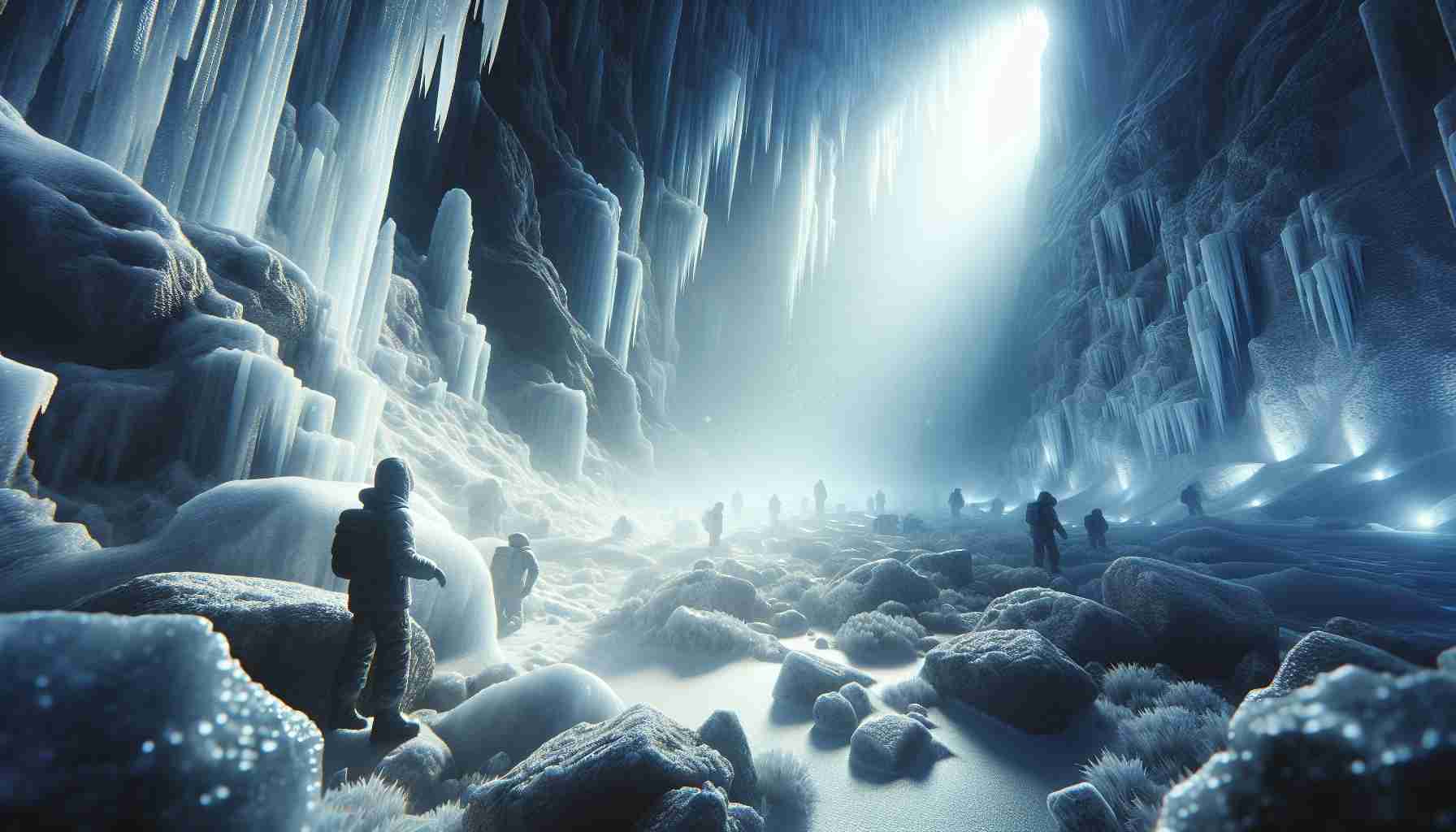Breakthrough Findings Beneath Polar Ice
Recent revelations from a groundbreaking scientific expedition have sent ripples through the research community. A team of environmental scientists has unearthed significant data hidden beneath the thick ice of Antarctica, raising vital questions about climate change and ecosystem survival.
In their quest to understand the delicate balance of life beneath the ice, researchers utilized advanced technology to drill deep into the frozen landscape. What they discovered was astonishing: a complex network of previously unknown microbial life thriving in conditions once deemed inhospitable. This unexpected finding signifies the resilience of life and its potential to adapt even in extreme surroundings.
The implications of this discovery are profound. It suggests that these microorganisms play a critical role in nutrient cycling, which could influence global carbon dioxide levels and the overall health of our planet’s atmosphere. As the ice continues to melt due to rising temperatures, ongoing monitoring of this unique ecosystem will be essential.
Researchers emphasize that understanding these microorganisms is pivotal. Their research may not only inform us about past climate conditions but could also provide insights into future environmental scenarios. With the ice sheet rapidly changing, scientists are racing to gather as much data as possible before it’s too late, highlighting the urgency of their mission to protect this unknown yet vital aspect of our planet.
Unveiling the Hidden Ecosystem: A New Perspective on Climate Change
The discovery of a thriving microbial community beneath the Antarctic ice cap could significantly alter our understanding of Earth’s ecosystems and their resilience. This newfound ecosystem challenges the notion that life cannot endure in extreme environments. As these microorganisms contribute to nutrient cycling and carbon sequestration, their survival instincts suggest that they may offer critical insights into potential climate mitigation strategies.
On a larger scale, the implications are staggering. The ongoing melting of polar ice not only threatens global sea levels but also presents an opportunity to study adaptive responses in microorganisms that might inform breakthroughs in biotechnology and sustainable practices. For instance, understanding these extremophiles could enhance efforts in bioremediation, allowing us to tackle pollution and climate change more effectively.
Moreover, as this microbial ecosystem plays a role in regulating atmospheric gases, its study could reshape climate modeling and forecasting. Researchers predict that the data gleaned from these organisms may offer predictive insights into how ecosystems worldwide will respond to warming trends, ultimately influencing global economic policies related to environmental conservation.
In conclusion, unearthing this microbial haven illuminates a delicate thread in the tapestry of life on Earth. It underscores the necessity of an integrated approach to environmental science, highlighting that the survival of even the most diminutive life forms may hold answers to some of our planet’s most pressing challenges.
Unveiling Antarctic Secrets: The Hidden Microbial Life Under Ice
Breakthrough Findings Beneath Polar Ice
Recent scientific advancements have unveiled remarkable discoveries lurking beneath the icy expanse of Antarctica. A team of environmental scientists has gathered crucial data that not only enhances our understanding of climate change but also reveals the intricacies of life in one of the planet’s most extreme environments.
Key Features of the Discovery
– Microbial Diversity: The research team discovered a diverse community of microorganisms thriving under the thick ice. These tiny life forms exhibit unique adaptations that allow them to flourish in harsh conditions, challenging previous assumptions about the limits of life on Earth.
– Ecological Significance: The newly identified microbes play a vital role in nutrient cycling within the Antarctic ecosystem. Their activity could impact broader ecological processes, including global carbon dioxide levels, emphasizing their importance to planetary health.
– Advanced Research Techniques: Utilizing cutting-edge technology, scientists drilled deep into the Antarctic ice to access subglacial ecosystems. This progressive approach marks a significant shift in polar research methodologies, enabling a more thorough understanding of hidden biological networks.
Potential Environmental Impacts
As the Antarctic ice sheet continues to retreat due to climate change, the implications of these microbial communities cannot be overstated. The melting ice could introduce previously isolated microorganisms into the global ecosystem, potentially altering nutrient cycles and atmospheric conditions.
Use Cases for Insights Gained
– Climate Modeling: Understanding the role of these microorganisms in historical climate conditions can enhance predictive models for future climate scenarios, aiding in global climate action planning.
– Ecosystem Management: Insights into microbial life can inform conservation strategies for polar regions, ensuring the protection of these unique ecological niches.
Pros and Cons of the Findings
Pros:
– Highlights the adaptability of life in extreme conditions.
– Enhances the scientific understanding of climate change impacts.
– Provides critical data for future environmental monitoring.
Cons:
– Rapid changes in the ice sheet make timely research challenging.
– Potential unforeseen consequences of the introduction of these microorganisms into different ecosystems.
Insights and Innovations
This research not only paves the way for future explorations of extreme environments but also underscores the importance of interdisciplinary approaches combining microbiology, environmental science, and climate studies.
Security and Sustainability Considerations
The findings emphasize the need for sustainable research practices in fragile environments like Antarctica. Ensuring that scientific exploration does not further harm these delicate ecosystems is crucial as researchers balance discovery with ecological preservation.
Pricing and Funding Trends
Funding for polar research has seen fluctuations, often reliant on governmental and institutional support. As the urgency around climate change increases, investment in related research is likely to grow, enhancing the capabilities to study and monitor places like Antarctica.
Conclusion
The recent revelations beneath Antarctica’s ice layer offer unprecedented insights into the resilience of life. As scientists race against time to study these microbial communities, their findings may hold the key to understanding our planet’s past, present, and future. Continued research will be essential to protect these vital ecosystems as climatic conditions evolve.
For more information on ongoing research and findings in polar regions, visit NSIDC.
